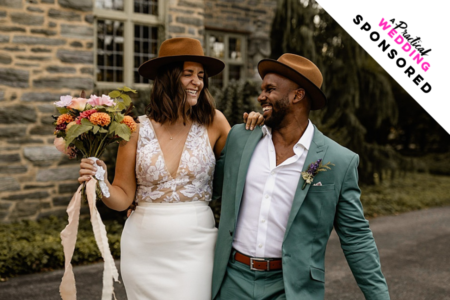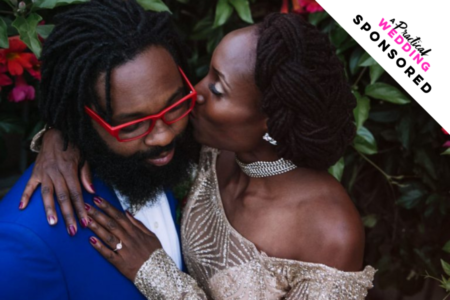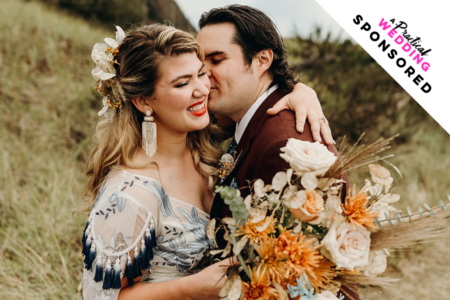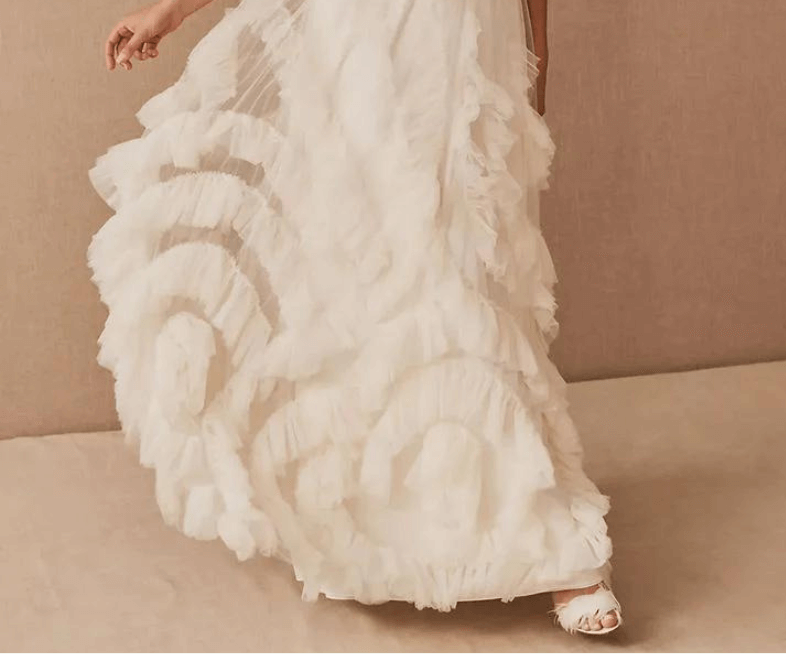\So today’s wedding graduate post is one that Clare (her new blog is here!) and I have been talking about for a full year. She took a while to think and write about it, and I’ve been waiting to post it for an embarrassingly long time. The thing is, this wedding, and everything Clare has to say about it, is so important that I wanted to wait for exactly the right moment to publish it, and here we are. Clare talks about two things that we’ve been discussing lately, and I wanted to explore more. She talks about finding your self-worth when planning your wedding and shaping you marriage. Clare says, “In all honesty, when I started reading A Practical Wedding, it didn’t really help! I thought ‘Well, that’s fine for those people, they are all gorgeous, creative and interesting. If I try to do something creative or wear a beautiful dress, people will laugh at me, and say I am not interesting and pretty enough to do so.’” Which is exactly IT, isn’t it? We’re all beautiful and interesting when we are fully ourselves, but it’s so hard to own that. And then, she says some of the wisest things about tradition that I’ve ever heard, “I consider tradition something that should provide nourishment and challenge to us on emotional and spiritual levels, it is a place where we can belong and can ask our questions.” And that’s it. That’s exactly what I think about tradition. So with that, I’m honored to bring you Clare and Sandy’s wedding, as shot by Lillian & Leonard. It makes me think, it makes me grin, and it makes me miss Edinburgh with a passion. Here we go.
We had a stressful wedding planning process, and I wish we had been more honest with ourselves and just letting it be that way. As we were trying to have a stress-free planning process, we ended up getting frustrated and feeling guilty when it wasn’t stress free or when we disagreed about decisions. We tried to mask over or avoid these conflicts, because we thought it made us a bad couple. In truth,you cannot run away from conflict, and it is the avoidance of conflict rather than its presence that makes a relationship difficult. We have had to learn about how to disagree well, and how important it is in a marriage. Conflict can be an opportunity to discuss differences and to learn about the other person’s perspective, and to perhaps reach a more creative solution.
Having said that, the planning process had its good moments too. We discussed the things that are most important to us, and how to represent them in the day. We talked about how to include our friends and family as much as possible, and in this process I learnt that Sandy is an incredibly loyal man.
We mixed using professionals and making things ourselves. A friend used my basic idea to draw and design the invites. Sandy’s Mum made the cake. The best man composed music for the ceremony, and played it with a band of our friends. We hand wrote notes to all our guests on the invites, which, whilst time consuming, meant a lot to us. Rather than a completely handmade wedding, which I would have loved (but was more than we could handle), we tried to pick out the things that were important to us and our friends and family, and to make those things personal and handmade.
On the day, I was really surprised at how much I enjoyed myself. I thought that the day would be meaningful, but not the kind of day that I would really enjoy because I’m just not ‘bridal material’; I’m goofy and nerdy, and the things I like best are laughing very hard, tea, silly dancing and good conversation with friends i.e. nothing beautiful or serene. So I feel slightly awkward saying this, but the12th September 2009 was the best day of my life.
It was the best day because in the morning, I spent time drinking tea with my closest friends. I spent time with my mum laughing at my hair in rollers. I took a walk with my dad, and hearing him say how proud he was. I listened to music written and performed by our talented friends. I took part in a ceremony that was in equal parts joyful, meaningful, inclusive and downright hilarious. I sat in my family home drinking tea with my husband and best man. I saw my friends reading and talking about books that I love.
I ate sausage and mash, and awesome banoffee pie. I saw my bridesmaid land a speech that she had been so nervous about. I danced in stupid and amusing ways with my friends. Any one of these things makes a day good for me. All in one day, well, was I a happy girl. And somewhere in the middle of that, I married my best friend.
In our marriage, we are aiming at a recognition and a welcome of community; we carry with us and are carried by so many friends and family. So, we tried to have the kind of wedding that represented and communicated this to everyone there. Rather than me being ‘given away’ by my family, the whole community gave us to each other; and as a married couple we made promises to the community, and they to us. We tried to ensure that our ‘guests’ were participants rather than spectators, and that they felt welcomed and included.
We were aware that whilst we wanted the ceremony to be representative of what we believe and value, friends and family would be there who hold different faiths, and some with none. We tried to make sure that the service was inclusive and participatory, without anyone feeling uncomfortable. We chose readings that reflected on the joyfulness of spirituality, and picked up on ideas of community, journey, and used inclusive language. Also, the minister marrying us was one of my lecturers and an old family friend, who did a brilliant job of making the ceremony relaxed, personal and welcoming.
Some of the most meaningful compliments were from those who appreciated how much effort we had put into making them feel welcome and part of the day. It particularly meant a lot to have friends who were usually very uncomfortable in religious settings say that they really enjoyed the service and found it very meaningful. Some also commented on how much they appreciated that it made them feel like participants whilst not forcing our beliefs upon them.
We also tried to speak to as many people on the day as possible, and make time for ‘real’ conversation, although I was skeptical about this actually working. In the end, I know how much it meant to me and to friends that we sat down and had a proper conversation with them that didn’t just go over how nice a day it was.
Meg, I know you are dying to know about the books. (Editors note: Squeeeeeeeee!)
We really enjoy reading, and, for me, there is a lot of aesthetic pleasure in a well made, beautifully presented book. Plus, we proposed to each other with handmade books: Sandy made me a comic book, and I made him a pop-up book. The idea of using books at the wedding went from being a silly idea to a reality over dinner with my parents one night.
The four of us made various suggestions that somehow produced something that we were all really excited about! We then decided on some of our favourite (and appropriate) titles and put some thought into what books people would appreciate being introduced to, or reminded of. It was really just a sneaky opportunity to introduce friends to some good reads and authors! We already knew our favourite quotes from the book by heart, so made bookmarks that said ‘read me’ so that guests could entertain each other. In the week before the wedding, I also made bookplate name places, with pictures and quotes from the books. Having no graphic design or art skills, it was stupid to do it that late, but it meant that I wasn’t stressing about anything else! Seeing people reading to each other, and getting talking about books made us geeks pretty happy! (Editors note, Part II: Swallows and Amazons, above, remains one of my favorite books from childhood. And when I start A Practical Family one day, you can expect the tag line to be, at least in spirit, the quote on the name plate above “Better drowned than duffers. If not duffers, won’t drown.” Which is something my Great Aunt still says with absolute firmness about her grandchildren, almost 70 years after she first read the book.)
I confess that I was guilty of trying to get your friends, family and partner on board with a particular idea, and then stressing out when they didn’t love it as much as I did. But not getting your own way is often a very good thing. Sandy wanting to cut the cake with a sword was not something I was keen on, but I learnt that this was his way of showing respect to a family tradition and making his Dad feel like part of the day. Also, there are certain images you get in your head of how you want the day to go, how you hope people will react and so on – hold these lightly and don’t try to force them to happen. If you get so caught up in a particular part of the wedding happening a certain way, you will be disappointed and often miss out on how brilliant and creative the reality is. And you know what – you can’t control your partner/family/friends in life, so why should you when planning a wedding? Life won’t always pan out like the ideas in your head, people won’t always do what you hoped they would. Often, the reality ends up being so much better.
In all honesty, when I started reading A Practical Wedding, it didn’t really help! I thought ‘Well, that’s fine for those people, they are all gorgeous, creative and interesting. If I try to do something creative or wear a beautiful dress, people will laugh at me, and say I am not interesting and pretty enough to do so.’ I was also convinced that we didn’t deserve to have good photographers. It took me ages to ‘own’ the wedding; not in the sense of it being about me, but in the sense of being allowed to think and care about crafting a wedding and marriage in which you are yourself.
This will sound very cheesy, but booking our wedding photographers Lillian & Leonard) was a big step. I was convinced that their beautiful photography and wonderful lives were far too classy and creative for us, and that they would laugh at our small and insignificant wedding. I couldn’t have been more wrong. Cara and Nye constantly sounded excited for us, which gave me a bit more personal confidence. I’m not the kind of girl to get excited about wedding dresses, but it was a big step for me to choose something that I liked, as I had the terrible syndrome of thinking that I shouldn’t bother making too much effort because I wasn’t worth it. Funnily enough, it took the wedding to make me appreciate that I can value aesthetics as well as ethics, my body as well as my mind and soul. Going with the book idea was another big step toward making the wedding ‘ours’. I sometimes beat myself up a bit about caring about these ‘unimportant’ things (like the dress), but I guess it is OK to care about your wedding.
My advice to you: Choose to be relaxed and happy on the day. Yes, stuff went wrong. Yes, we noticed. However, as Peonies pointed out to us, if you are seen to be enjoying yourself, then that sets the tone for the guests, and they are likely to relax too, and not care about things going ‘wrong’.
A quick note on tradition. We weren’t really aiming at either a traditional or non-traditional wedding, we thought about what was meaningful to us and our friends and family, and how to represent that on the day, as well as what was going to be best logistically. In actual fact, we started with our guest list and worked from there. So here’s the thing – whether you are planning a traditional or non- traditional, typical or atypical wedding. Ask yourself: whose ‘tradition’ is this anyway? I consider tradition something that should provide nourishment and challenge to us on emotional and spiritual levels, it is a place where we can belong and can ask our questions. (Geek time: the latin origin of tradition ‘traditio’ means not only to hand on but to hand over, the meanings of practices such as those within weddings are not rigid, but given on to us to value and interpret in our own contexts.)
I am a Christian, but there is much in the Christian tradition that is harmful and oppressive, particularly when it comes to women. However, I think it is possible to retain elements of the tradition that are good and beautiful and leave aside those that aren’t. I am also a feminist, and I struggled with the fact that my dad really wanted to walk me down the aisle; in the end I realized it was important to him not as a symbol of him ‘giving me away’, but of him continuing to walk through life with me.
All in all, it is a struggle to work out how to work with tradition when it is good, and to fight against it when it is oppressive. Whether religious, humanist or secular, weddings are a good opportunity to consider why you believe (or don’t believe) in certain things, and how you can live these out in life and marriage. I would actually be interested in whether other people went through a similar process of thinking about the beliefs and values that they have chosen and/or inherited – particularly when it comes to religion. As I said, we thought quite a bit about the interplay between Christianity and feminism in marriage, and how to represent those two things simultaneously in a wedding ceremony. In the end, it was really good for growing constructive, liberating spirituality between us.
Photos By: Lillian & Leonard (I feel sort of badly, because in shortening the post, I had to cut an absolute novel that Clare wrote about how great Cara & Nye are. She found them through APW, and as someone who’s met Cara & Nye in person, and palled around with Cara for years online, I have to second that. If you’re in the UK and planning a wedding for next summer… they are amazing, amazing people and clearly beyond talented. And, plus, soon they will be parents of twin baby girls, squeeeeee!)







